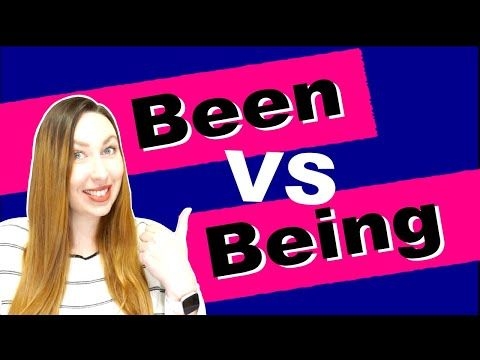Understanding the difference between “been” and “being” can be a confusing concept for many English language learners. Both words are forms of the verb “to be,” but they are used in different contexts. Let’s delve into the nuances of these two words to gain a better understanding of how to use them correctly.
When it comes to the word “been,” it is the past participle form of the verb “to be.” This means that it is used to indicate an action or state that has already occurred in the past. For example, “I have been to Paris” or “She has been studying for hours.” In these sentences, “been” is used to show that the action has taken place at some point in the past.
On the other hand, “being” is the present participle form of the verb “to be.” This means that it is used to indicate an action or state that is currently happening or ongoing. For example, “He is being rude” or “They are being silly.” In these sentences, “being” is used to show that the action is happening in the present moment.
It’s important to note that “been” is used in conjunction with helping verbs such as “have” or “has,” while “being” is used with the present tense of the verb “to be” (is, am, are). Understanding the correct usage of these words can help you communicate more effectively in English.
In summary, “been” is used to indicate actions or states that have already occurred in the past, while “being” is used to indicate actions or states that are currently happening or ongoing. By paying attention to the context and tense of the sentence, you can determine whether to use “been” or “being” correctly.
Next time you find yourself unsure of whether to use “been” or “being,” remember the differences between the two and apply them to your sentence. With practice, you’ll become more confident in using these words correctly and effectively in your writing and speech.
In conclusion, mastering the usage of “been” and “being” can enhance your English language skills and improve your overall communication. By understanding the subtle distinctions between these two words, you can convey your thoughts and ideas more accurately and confidently.
